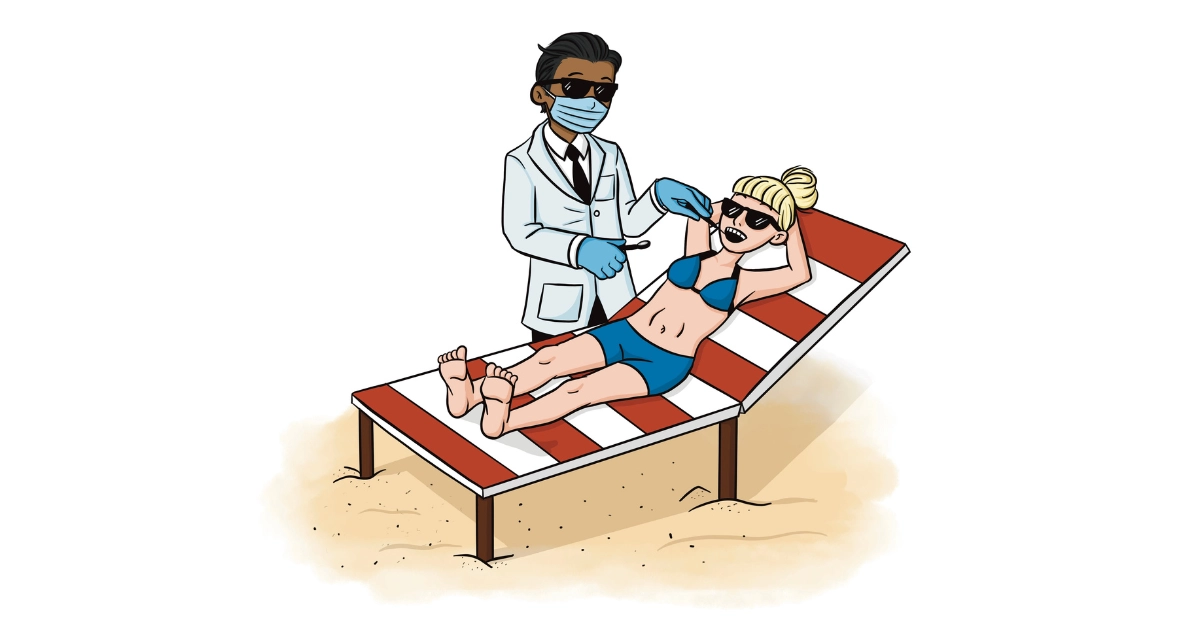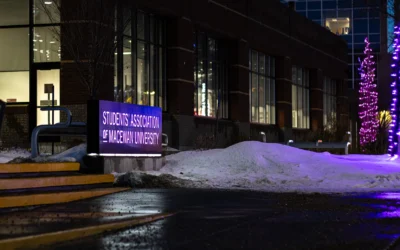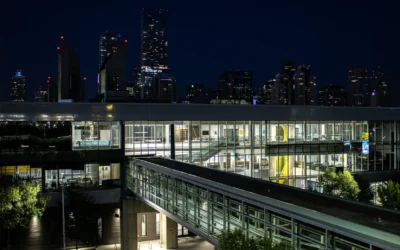Last September, Ryan Bloemen, a young adult from Edmonton, attended the first of three dental appointments for replacement fillings and persistent cavities. Ryan, like many young adults, had inconsistent dental work since he had turned 18 due to a lack of time and the high costs of dental care. When it got to a point where his quality of life was being affected, he did some research, compared prices, booked the appointments, and boarded a plane to Puerto Vallarta, Mexico.
“My father went there in May, and he got a root canal,” he says. “So, for him, it was a two-for-one thing because my parents like going to Mexico, and he needed a root canal. And he found out that he could get one for significantly cheaper out in Mexico. And for him, it went very well. And so, I just decided I could give it a try.”
“We see that a lot,” says Dr. Kyle Lesko, a Leduc-based dentist. “They’ve gone to Mexico to get crowns done or implants because it’s a fraction of the cost.”
This is what sustains dental tourism and the medical tourism industry at large. In Canada, as well in most countries, dentistry does not fall under a nationalized, single-payer model like hospital visits and surgical procedures. Many, including students at MacEwan, gain access to dental care via health benefits provided by school or work, but those plans vary in what they cover for procedures and cost. Treatments that don’t fall under the umbrella of coverage require the patient to pay out of pocket.
“People go away elsewhere to save money, and then they can end up spending more money in the long run, trying to rectify any potential complications.”
Dr. Kyle Lesko, Leduc-based dentist
What we can attribute the growth of the industry to is hard to pin down to just one reason. But, an aging and affluent population likely contributes to a vast portion of it, as well as the barriers of high-costs for treatment and long wait times lead people to consider accessing systems outside of Canada that provide similar services at a fraction of the cost.
So, it shouldn’t be a surprise that dental tourism and medical tourism — travelling to seek medical care — are booming. The researcher Doris Peručić reports in her 2019 study that dental and medical tourism has become the fastest growing sector of the tourism industry.All European Union member states are listed as medical tourism destinations since the 2013 Cross-Border Healthcare directive ensured all EU citizens “have the right to access healthcare in any EU country and to be reimbursed for care abroad by their home country.”
In Asia, countries actively promote wellness schemes to attract tourist dollars. Los Algodones, a small Mexican town located on the U.S. border with a population of just over 5,000 people, has an estimated 600 practicing dentists. These dentists mainly cater to American and Canadian tourists. Their reputation for the concentration of dentistry extends so far out that the town is dubbed “Molar City.” Mexico has specifically marketed itself as a dental work destination so much so that there are tourist agencies offering travel packages that include dental appointments along with the sun, sand, and tequila.
“They’ve gone to Mexico to get crowns done or implants because it’s a fraction of the cost. ”
Dr. Kyle Lesko, Leduc-based dentist
“All the stuff that I got done in Mexico was about 500 pesos with the taxes,” says Bloemen. “This is about $60, $70 (CAD). But, with the same procedure getting done [in Canada], it was going to be about $3,000. So, even with the flights and hotel, I didn’t even hit $1,000 on everything in total.”
But the promise of easy access and low costs doesn’t always deliver on the rosy utopian vision of cheap dental work.
A quick Google search can reveal horror stories. In 2023, three people were kidnapped in Matamoros, Mexico, when they went down to seek inexpensive medical procedures and inadvertently found themselves caught in a cartel shootout. But, that’s the extreme of medical and dental tourism — the worry is much less about kidnappings and ransom, but rather the lack of regulations on materials used and the industry standards.
“I feel like in all these countries, very good work can be done,” says Dr. Lesko. But, he speaks to a broader problem concerning a more comprehensive range of quality outcomes in care. “People go away elsewhere to save money, and then they can end up spending more money in the long run, trying to rectify any potential complications. Or, those complications preclude them from getting the result that they’re looking for. They might go there to get a root canal done and a crown to save a tooth, and then they end up with complications and lose the tooth entirely.”
This is partly the risk that patients sign up for when they access out-of-country care. A dentist in Canada isn’t necessarily privy to the thought process that goes into treatments in another part of the world, nor are they aware of the specifics on what material or compounds have been used for the fillings and molds.
But, for all the worries about receiving subpar care that there is, there is also a broader discussion to be had in respect to health-care inequity. In Los Algodones, for example, not many dentists actually provide appointments and checkups to the local population. Instead, they opt to provide services to cross-border patients with comparatively deeper pockets. For a lot of these cheap health-care destinations, there is the potential to further the class divide between the wealthy and lower-income people. This could engender access barriers, and result in an underserved local population needing care.
“All the stuff that I got done in Mexico was about 500 pesos with the taxes,” says Bloemen. “This is about $60, $70 (CAD). But, with the same procedure getting done here, it was going to be about $3,000. So even with the flights and hotel, I didn’t even hit $1,000 on everything in total”
Ryan Bloeman, Edmonton resident
Critics argue that tourist dollars can further exasperate structural inequities experienced via inequitable distribution and access to industry resources. That notion could give pause to someone wanting to get dental work done. For most people in need of required dental care, pain trumps ideology; but, those travelling for cosmetic procedures may want to know about the inequities their money is potentially promoting.
The underlying issue with medical tourism is that the range of outcomes potentially becomes more varied for those seeking care abroad.Dr. Lesko says he probably wouldn’t seek medical or dental treatment abroad, but doesn’t judge or discourage any patients that tell him that they’re considering it. But, he does caution them to consider that Canada has restrictions and rules in place to protect the provider and the patient by ensuring they receive a certain standard of care. Once you have ventured out of the system, there is no guarantee that there will be the same adherence to the rules and regulations elsewhere.
“I’m not saying that it [the medical tourism industry] shouldn’t exist, or it can’t exist. It’s just one of those things where it’s more ‘user-beware,’” says Dr. Lesko. “The one thing that people need to factor into the equation is, although there’s amazing technology in dentistry, there’s still a personal aspect to the profession where you have someone with their hands in your mouth that has to decide, ‘is this a nice contour?’ ‘Is that sealed?’ And, a lot of that just means people need to be informed.”
As for Bloemen, he’s happy with the results, and he feels like travelling to Puerto Vallarta for dental procedures was worth the trip, and that he would do it again. But, there is some hesitancy in his voice as he contemplates everything he went through.
“It feels like a very North American thing. To suggest to people, ‘oh, get this done while you’re down there.’ Well, why can’t I just do it at home? For me, this was basically out of necessity because I did not have the money to do it at home. If I had to get it done or have my teeth fall out, I’m going to get it done.”
Graphic by Sam Poier





There are options for Edmonton area residents who are experiencing dental pain, which constitutes as a dental emergency
SHINE dentistry https://www.shinedentistry.org/ where free emergency dental care is provided every Saturday
In addition, the U of A dental school charges 50-60% of the Alberta fee guide and takes insurance. https://www.ualberta.ca/school-of-dentistry/oral-health-clinic/patient-information/patient-appointments.html
Radius also provides dentistry at an affordable price as well https://radiushealth.ca/services/dental-care/